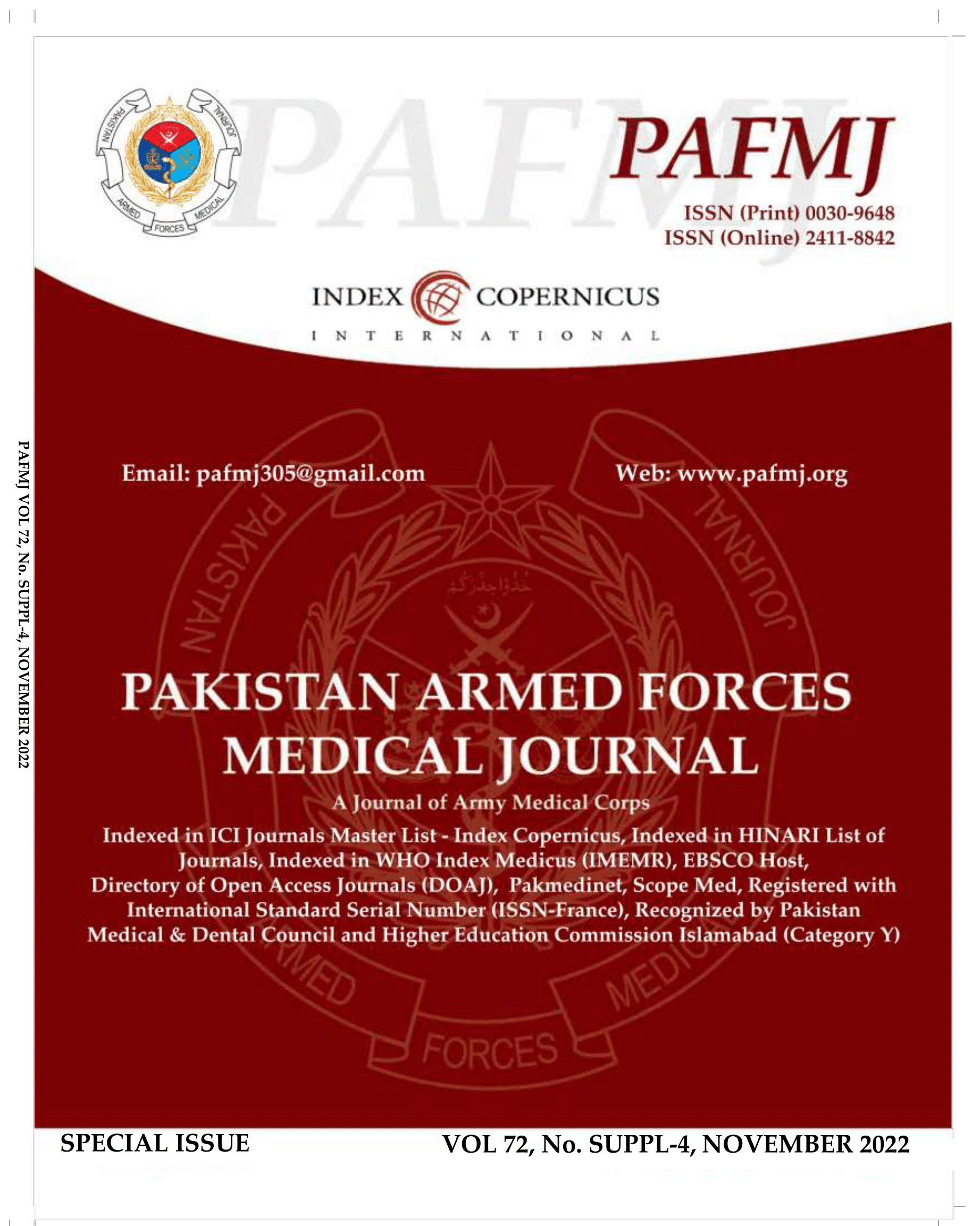Prevalence of Imposter Syndrome Among Medical Students of Rawalpindi, Islamabad and Lahore: A Cross-Sectional Study Investigating A Trending and Pragmatic Topic: we no Longer Have to Live in Pluralistic Ignorance
DOI:
https://doi.org/10.51253/pafmj.v72iSUPPL-4.9681Keywords:
Burnout, Imposter Syndrome, Medical StudentsAbstract
Objectives: To determine the prevalence of Imposter syndrome among medical students and to assess its association with
various sociodemographic factors.
Study Design: Analytical cross-sectional study.
Replace and During of Study: Public and Private Medical Colleges of Islamabad/Rawalpindi and Lahore Pakistan, from Nov 2021-Apr 2022.
Methodology: An analytical cross-sectional study was carried out in Public and Private Medical and Dental Colleges of Islamabad/Rawalpindi and Lahore Pakistan, from Nov 2021 to Apr 2022. Three hundred ninety-nine eligible MBBS/ BDS students were enrolled through non probability convenience sampling. Data was collected Online through a 20 item Clance questionnaire. Data was analysed using SPSS Version-25. Qualitative variables were expressed as frequency and percentages and quantitative variables as mean and S.D. Chi-square test was applied.
Results: Out of 399 participants, 254(63.6%) were males and 145(36.3%) were females. Majority of the participants (71.4%) were in age range of 20-22 years. Three hundred and sixty-two (90.7%) participants were students of MBBS, while 37(9.3%)studied in BDS. Two hundred fifty (62.65%) participants suffered from imposter syndrome which showed a positive association with gender (p<0.001), age (p<0.001), year of Study (p<0.001) and academic performance in class (p=0.002).
Conclusion: Imposter syndrome is quite prevalent among the high achieving medical students and is associated with various sociodemographic variables. Further in-depth research is needed to confirm its association with mental health issues and its adverse effects on the normal functioning of individuals.
Downloads
Downloads
Published
Issue
Section
License
Copyright (c) 2022 Pakistan Armed Forces Medical Journal

This work is licensed under a Creative Commons Attribution-NonCommercial 4.0 International License.















